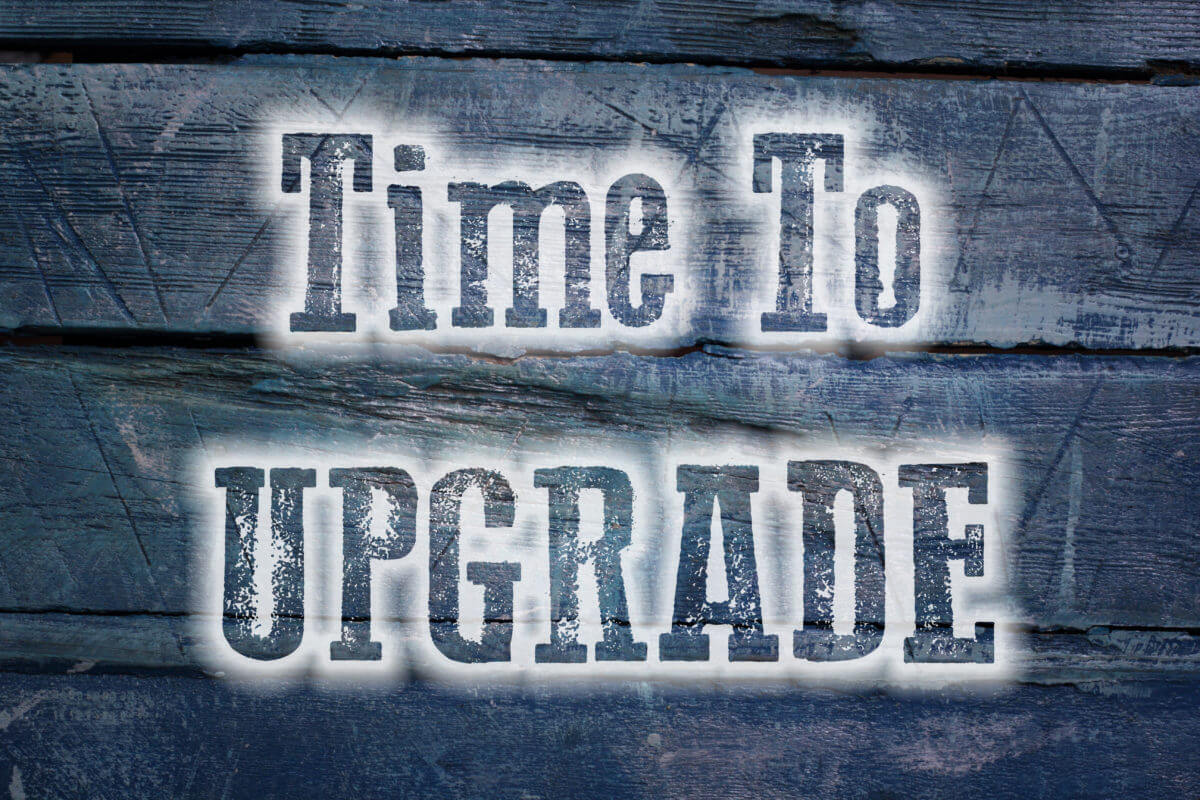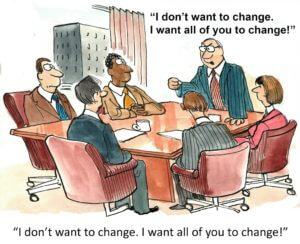Companies wishing to build customer loyalty in the midst of a world being digitally transformed need to introduce the Customer Experience Management Office.
Existing approaches such as Program Management Offices do not address the need of the organization to become customer-centric. According to the Project Management Institutes definition “PMO’s serve as a means to standardize project-related governance processes and facilitate sharing of resources and tools. Others serve as centers of excellence, and still, others align project and program work to corporate strategy across an enterprise.”
1. Evolving from a Program Management Office (PMO) to a Customer Experience Management Office (CXMO).
You may be doing things right, but are you doing the right things?
There is a requirement to call out the need for Customer Centricity in literally everything the enterprise does.
Recently I was working with a global retailer who claimed that they managed Customer Experience via the projects orchestrated by the PMO, so I asked for their measures of success within the PMO.
Interestingly the primary metrics focused on three things – coming in on time, to the budget and achieving agreed project deliverables. So, digging deeper revealed the ‘deliverables’ were mostly aligned with functional objectives and only 15% of those talked to the challenge of becoming customer centric. Even more so – less than 10% talked about joined-up thinking across the silos on behalf of better customer experiences.
Therefore, evolving the PMO to a CXMO is required to centralise the enterprise-wide approach to ensure a consistent and strategic effort.
Find out more and register for the CXMO webinar > JOIN HERE <

2. The CXMO is not another functional forever specialism
This isn’t another excuse for empire building. The strategic CX justification revolves around enhanced/redefined Customer Experiences that deliver improved service, lower costs and higher revenues (referred to as the ‘triple crown’) initially from the enterprise-wide consolidation of customer-centric effort, then through systematically aligning everything to contribute to Successful Customer Outcomes.
Hence the CXMO usually has a limited lifespan of 3-4 years as once the discipline is established and everyone is aligned to Successful Customer Outcomes the resources can be devolved back into the business.
In summary, establishing a CXMO is a systematic and strategic initiative.
Co-ordinating everyone, from the boardroom to the tea room, is essential to ensure the shift from the industrial age to the customer centricity age delivers practically and immediately.
Find out more and register for the CXMO webinar > JOIN HERE <
3. Harnessing the disparate CX efforts requires a CXMO.
The majority of people can agree on the valuable benefits of becoming customer centric (triple crown etc.) however departments and divisions will need to be aligned.
For example, the IT systems underpinning current operations were never designed with customer centricity in mind. Their purpose was to automate tasks and activities associated with functional activities such as Accounting, Sales, Customer Call Centers and so on. Sometimes there are efforts to integrate data across these silos but even enterprise-wide systems still have a focus on outputs, rather than delivering well-crafted Outcomes.
Hence migrating the critical to mission systems requires a strategic, top-down driven effort, so that changes are planned, consistent and co-ordinated against customer experience priorities for every part of the organization.
Find out more and register for the CXMO webinar > JOIN HERE <
-
Reward structures
A significant challenge impacts the Rewards and Remuneration structures. In industrial Age, thinking employees are rewarded for doing things, and not necessarily in delivering results.
A simple way to test this hypothesis is to look at the metrics that drive business performance and see whether there are a majority of the measures targeted at counting outputs, rather than customer outcomes. Typical call centres, for example, will be measuring things like Number of Calls, Average Handle Time, Abandon rates and so on. How many of these does the customer actually care about?
Progressive Customer Centric companies shift the emphasis to measuring the Customer Outcome desired. This fundamental shift in the metrics requires that employees are rewarded for delivering results, rather than completing tasks, and therefore a strategic enterprise-wide rethink to ensure all the dots and connected.
Find out more and register for the CXMO webinar > JOIN HERE <
-
Walking the Talk by the top team requires an enabled CXMO.
In the example of the Call Center, what is in a name? A lot it would seem. Imagine renaming the Call Center to a Customer Experience Center… Naturally, measures of success should shift to emphasizing the actual customer experience rather than just processing calls as in a production line.

The top team needs to take ownership of the challenge as all too often they can be heard talking about how important the customer is, how we should be customer focussed, how much the customer matters to us while at the same time reminding the Call Center people that Average Handle Time (AHT) is king.
If you work in an environment which prioritizes AHT as a leading measure of success your concern about delivering a Successful Customer Outcome becomes secondary. So, it isn’t just about talking the talk, it is about the top team actioning a customer-centric vision supported by creating the right Attitudes, Behaviours and Culture.
Find out more and register for the CXMO webinar >JOIN HERE<
-
Where to Start?
This really isn’t a choice. You have to start where you are now, move quickly and begin to harvest the benefits of customer-centric operations. An early objective is to examine the deliverables for all current projects and ask the question ‘how will achieving this contribute to improving the customer experience?’.
You will meet resistance from some folks who say ‘this project has nothing to do with the customer… it is an IT systems change, a change to internal processes, a new accounting approach etc.’ Your response is the natural ‘everything should contribute to Successful Customer Outcomes, and if we are doing things that don’t they should be stopped’.

The principle here is one of connecting the dots through to every customer interaction, which leads to another objective; identifying the critical customer experiences and mapping those in the context of their linkages with internal processes, rules and digital dependencies. This will then produce a prioritised list of targets for improvement.
There is no doubt some heavy lifting involved, not least of which is planning the migration from current state PMO to future state CXMO. There are many objectives to consider and your overall approach should be determined by the maturity of your organization.
To review the options join us in the webinar walking through recent CXMO case studies and emerging ‘next practices’.
Find out more and register for the CXMO webinar > JOIN HERE <


